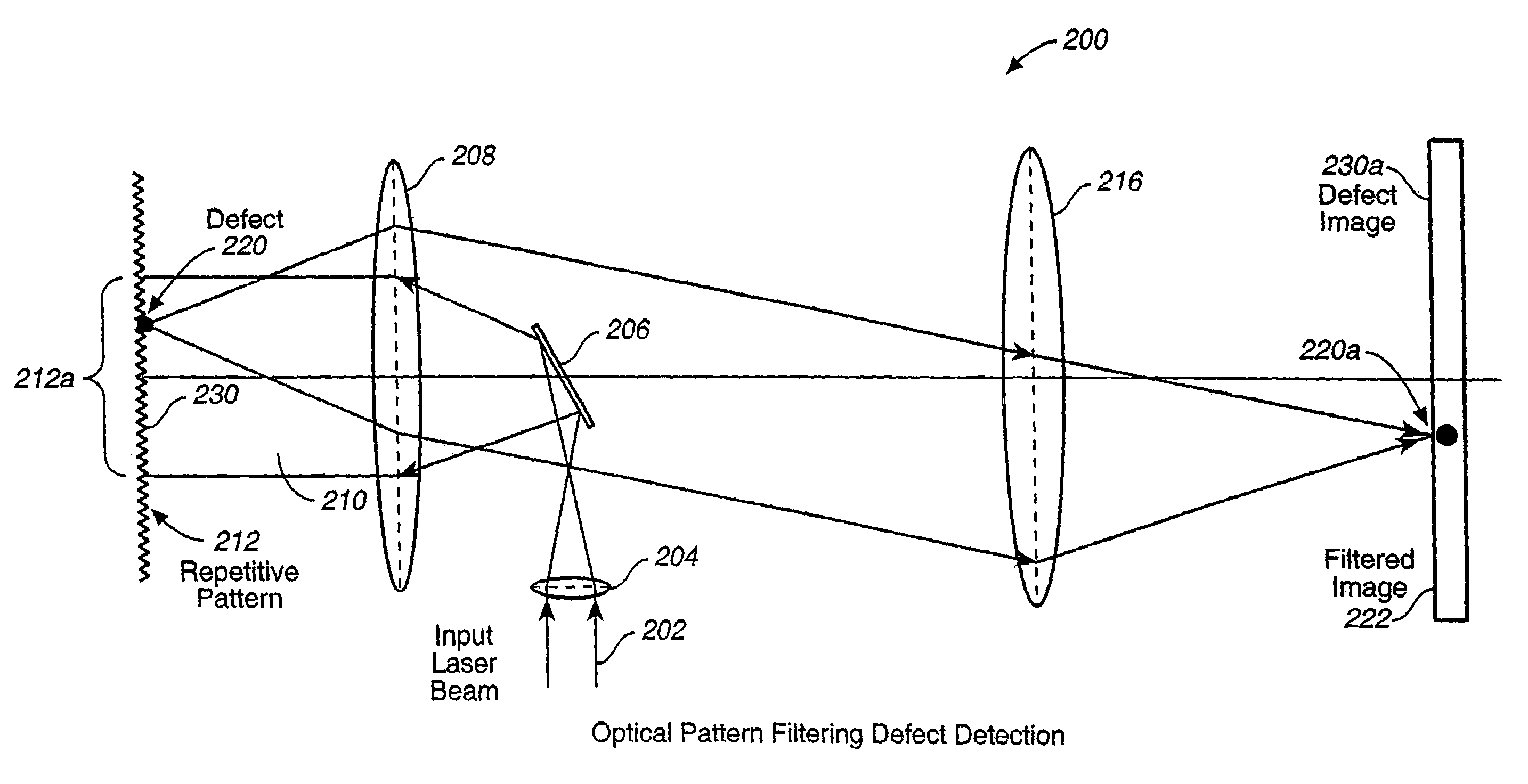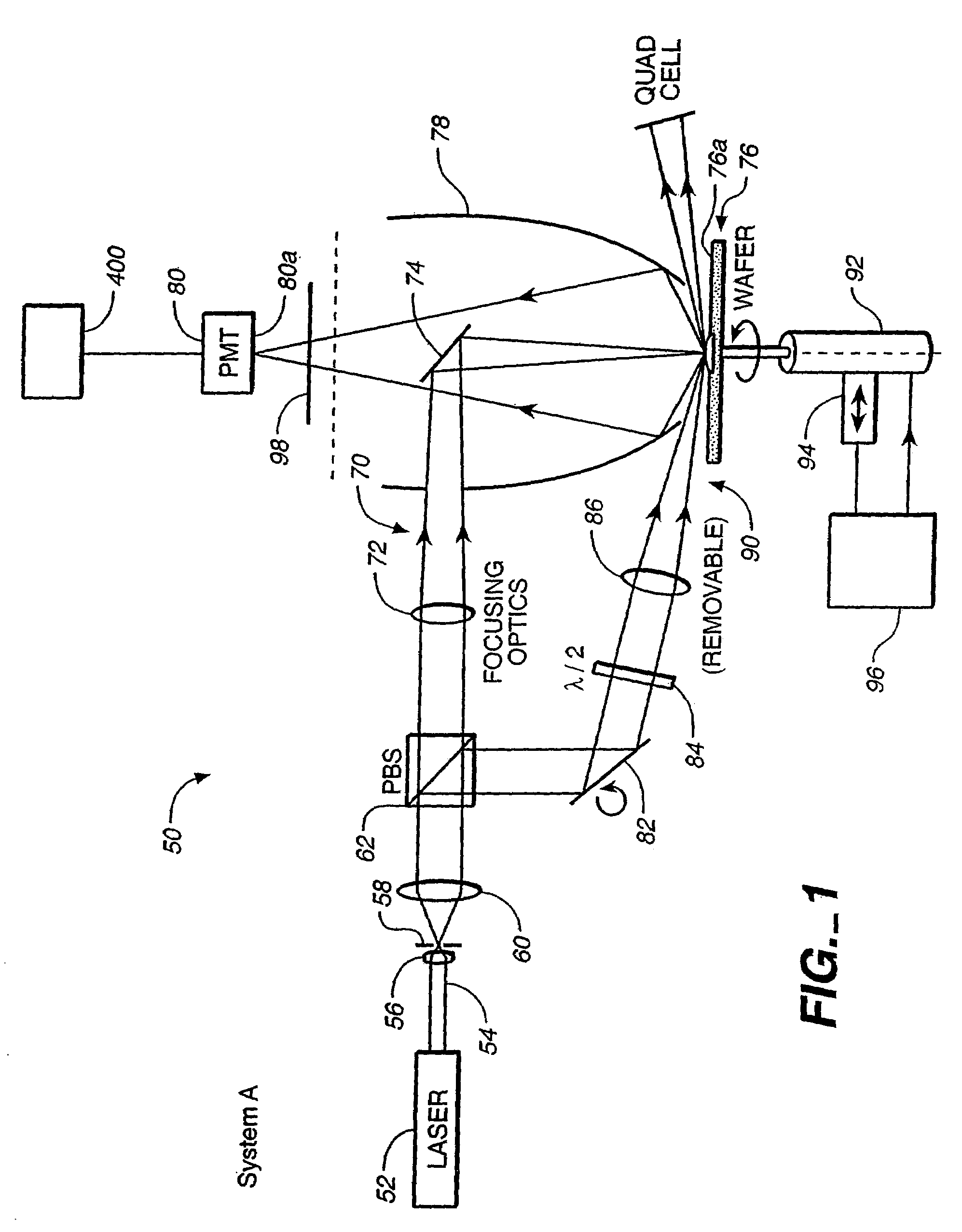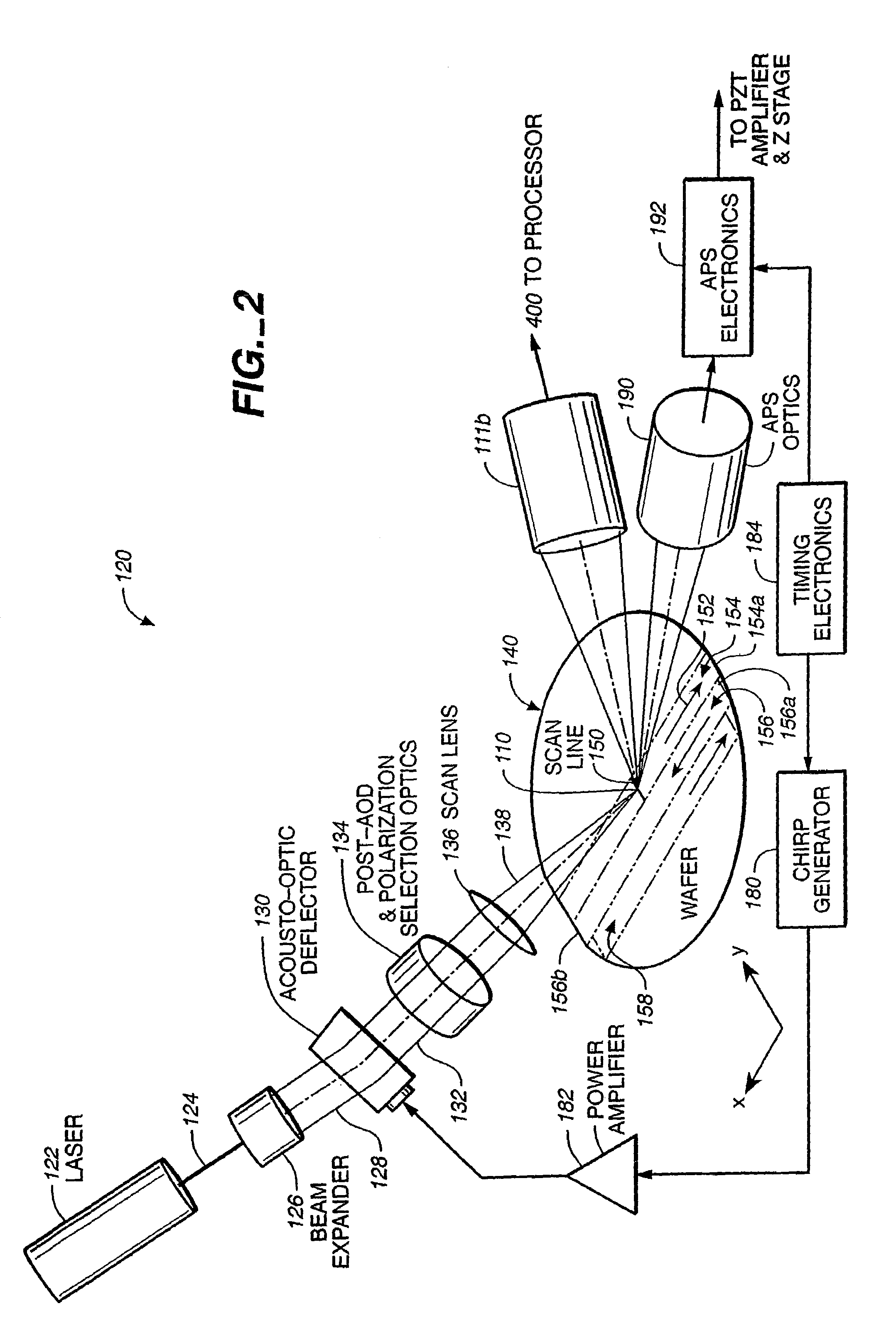System and methods for classifying anomalies of sample surfaces
a sample surface and anomaly technology, applied in the field of sample surface anomalies detection systems, can solve the problems of different sources of defects, unique set of defects, and different impacts on the final device yield, and achieve the effect of improving yield
- Summary
- Abstract
- Description
- Claims
- Application Information
AI Technical Summary
Benefits of technology
Problems solved by technology
Method used
Image
Examples
Embodiment Construction
[0025]As noted above, the Surfscan SPITBI® instrument available from the assignee of the present application, KLA-Tencor Corporation, may be used for inspecting semiconductor wafer surfaces, such as those of unpatterned wafers, as well as other sample surfaces, such as those of magnetic or optical disks for storage and flat panel display type devices. A description of such system is set forth in U.S. patent application Ser. No. 08 / 933,771, filed on Sep. 19, 1997, entitled “Improved Sample Inspection System.” This application is incorporated herein by reference in its entirety, and is referred to herein as the companion application. While the description below of the Surfscan SPITBI® instrument taken from such application describes anomaly detection of semiconductor wafer and film surfaces, it will be understood that essentially the same instrument and process may be used for defect detection of other samples such as magnetic or optical disks used for information storage and flat pan...
PUM
| Property | Measurement | Unit |
|---|---|---|
| size | aaaaa | aaaaa |
| length | aaaaa | aaaaa |
| size | aaaaa | aaaaa |
Abstract
Description
Claims
Application Information
 Login to View More
Login to View More - R&D
- Intellectual Property
- Life Sciences
- Materials
- Tech Scout
- Unparalleled Data Quality
- Higher Quality Content
- 60% Fewer Hallucinations
Browse by: Latest US Patents, China's latest patents, Technical Efficacy Thesaurus, Application Domain, Technology Topic, Popular Technical Reports.
© 2025 PatSnap. All rights reserved.Legal|Privacy policy|Modern Slavery Act Transparency Statement|Sitemap|About US| Contact US: help@patsnap.com



